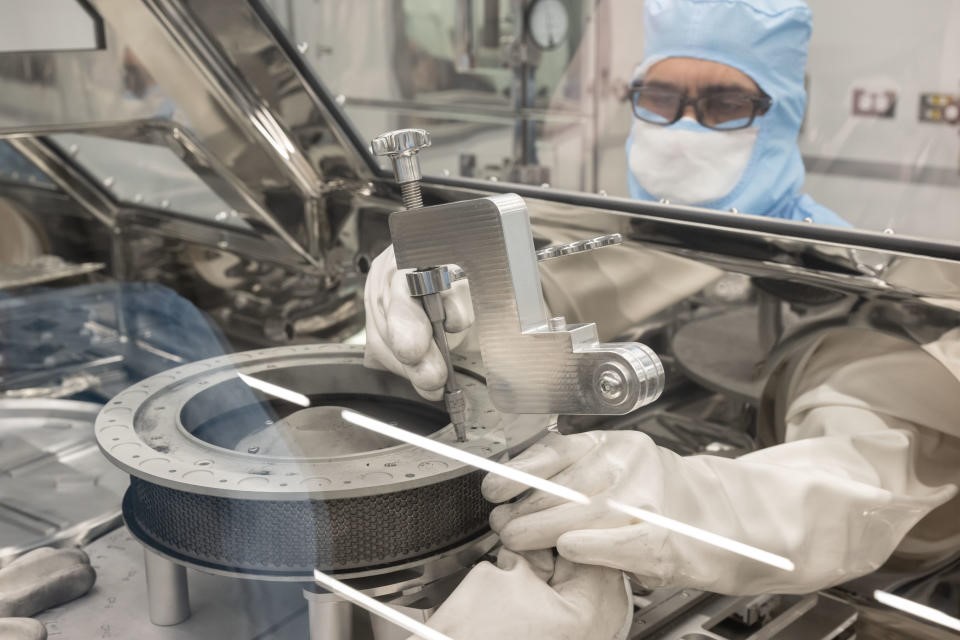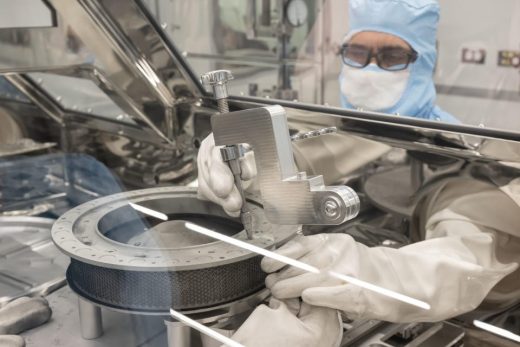NASA finally got the stuck lid off its asteroid Bennu sample container
NASA finally got the stuck lid off its asteroid Bennu sample container
The agency spent three months locked out of the OSIRIS-REx sample.

You’d think grabbing a scoop of dirt off an orbiting space rock and then delivering it back to Earth would be the most complicated part of an asteroid sample collection mission, but the real challenge, it turns out, is actually opening that sample container once it’s back home. It’s taken a little over three months, but NASA says it has finally removed two stuck fasteners that were preventing it from accessing the bulk of material collected from asteroid Bennu by its OSIRIS-REx spacecraft. OSIRIS-REx dropped the sample off on September 24 before heading off to study another asteroid, Apophis.
While NASA was initially able to collect a few ounces of asteroid material that was found on the outside of the Touch-and-Go-Sample Acquisition Mechanism (TAGSAM), its inner contents remained locked away due to issues with two of the 35 fasteners that keep the container closed. The TAGSAM is housed in a special glovebox to prevent the sample from being contaminated, and only certain tools are approved for use with it. None of the existing tools were working to get the stubborn fasteners off the TAGSAM head, so the team had to develop new ones.
“In addition to the design challenge of being limited to curation-approved materials to protect the scientific value of the asteroid sample, these new tools also needed to function within the tightly-confined space of the glovebox, limiting their height, weight, and potential arc movement,” said Dr. Nicole Lunning, an OSIRIS-REx curator. Now that the TAGSAM head has been freed, the team can move forward with the container’s disassembly — meaning we’ll soon be able to see what’s inside. NASA’s preliminary assessment of dust and rocks from outside the TAGSAM found evidence of carbon and water.
(8)



